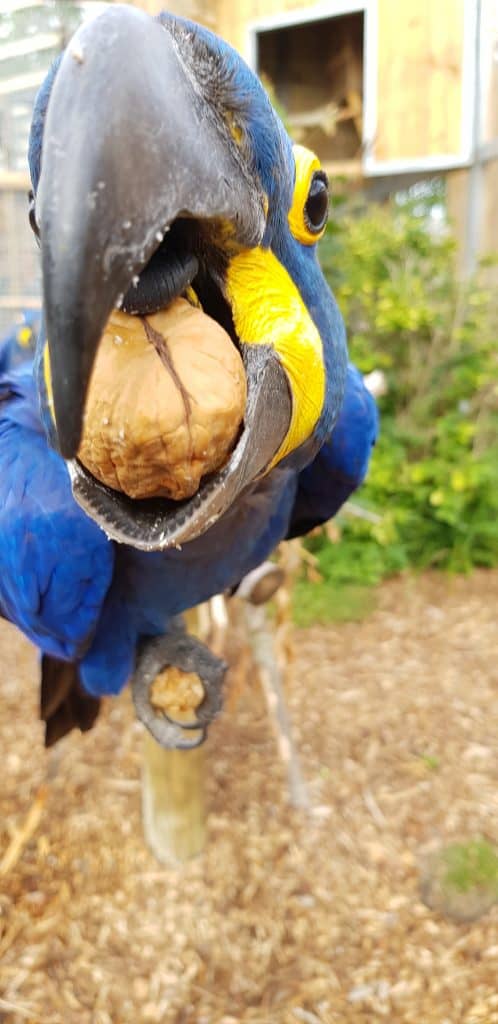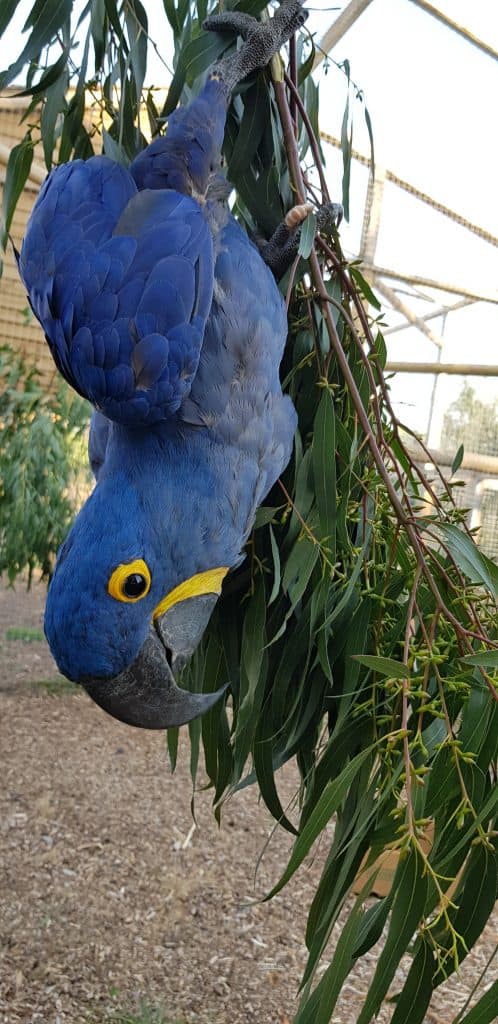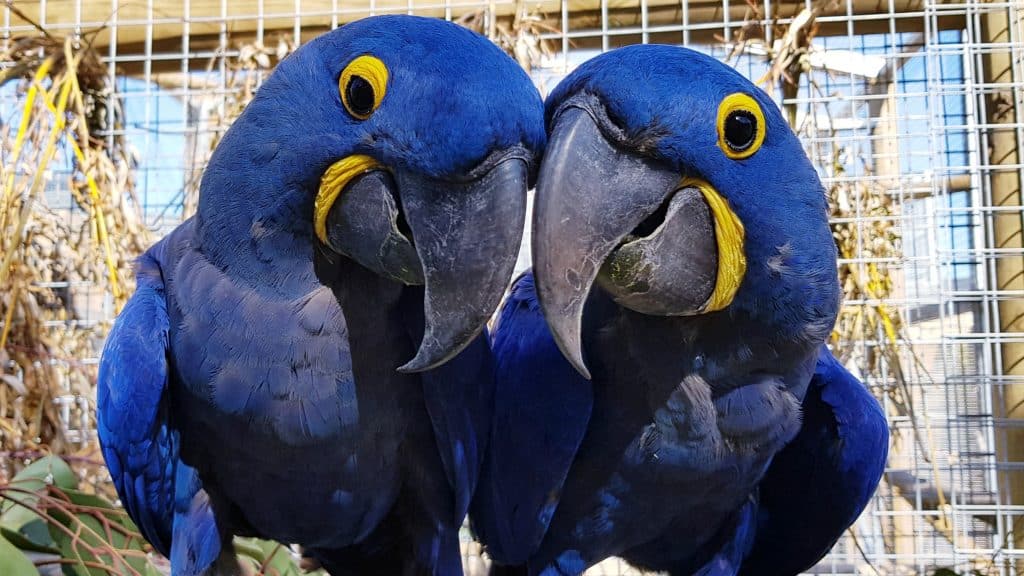Earlier this week we celebrated World Parrot Day! An important date in my diary, which takes place annually on the 31st of May. A day to appreciate how amazing these groups of birds are and to reflect on the threats they face in the wild. There are over 400 species of birds in the order “Psittaciformes” which contains six Parrot families. I thought this would be the perfect opportunity to dedicate this blog to my favourite species of Parrot, the Hyacinth Macaw.
Hyacinth Macaws are the largest flying Parrot in the world with a length of 1m from the tip of its tail to the top of its head. Only the Kakapo, a flightless species of Parrot, is heavier than the Hyacinth Macaw by just over half a kilo. These huge Macaws have blue plumage with yellow patches on their face and black underwings.
A resident of South America, the Hyacinth Macaw comes from three areas: the tropical forests and surrounding savannas of Brazil, eastern Bolivia and Paraguay. They are classed as vulnerable to extinction on the IUCN red list with an estimated population of 4300 individuals left in the wild. Habitat destruction is one of their main threats in the wild however, throughout the 1980’s the species suffered major declines as an estimated 10,000 birds were illegally captured for the pet trade.
Here at Wingham Wildlife Park we have two pairs of Hyacinth Macaws which can be found near the entrance to the Bug Garden. You can normally hear them before you see them as their calls are extremely loud and raucous. When they’re not screeching like children they make a lot of growling noises to each other. They are definitely some of the cheekiest Parrots on Team Bird.
Otis is one of my favourite birds in the Park (blue birds are just awesome aren’t they?) and I think the photo below shows off his personality perfectly (he’s the one that is photobombing of course). He lives in the aviary nearest the Tropical House with his mate Dee-Dee and Otis can be distinguished because he has a white toe. Both of these birds are going to be 7 years old this summer and they both act like young Parrots. They are always at play and trying to get us to get involved too… although their play time is a bit rough for us with that bill that can crunch through a walnut like it is butter.

They are a nightmare to clean out as they absolutely love a pile of raked up leaves (or any mess) to play in, of course making a big mess all over again. Getting the crate of waste back off them for the compost heap is a challenge as well but I adore their cheeky antics and cleaning them out is one of my favourite tasks to do.
We have another two Hyacinths that live in the aviary nearest the Bug Garden, both names were chosen and voted for by the public. They are named after the Spix’s Macaws in the film “Rio”. Our male, Blue will be 10 years old soon, and although he acts really tough, he is a big softie deep down. He’s usually the first to start the alarm calls if he spots a Buzzard passing overhead. Our birds are fairly young really as they can live in excess of 50 years old. His girlfriend, Jewel turned 19 years old earlier this year, and she is very bold and usually comes down straight away to see any new enrichment we’ve put in for them. She definitely very driven by food!
These two really love their bird baths and will often ignore the water bowl that is next to their feeding platform and head to the floor to drink out of their bath on the floor. The baths were donated to the Park via our Amazon Wishlist. You can buy treats for the Hyacinths HERE. The Hyacinth Macaws seem to pick out and eat their Macadamia nuts first from their selection of mixed nuts, so I would say that they are their favourite.
Interestingly they rely on the local Manduvi trees for nesting in the wild. The older trees have natural cavities in which the female Hyacinth Macaw normally lays two eggs, however they will only usually look after one of their chicks. We have never had baby Hyacinth Macaws hatch here but we’re keeping our fingers crossed for the near future as our birds continue to show signs of bonding and nesting.

In the wild they are also dependent on the local trees and would mainly eat the hard fruits of a few regionally endemic palm species. Their diet here consists of walnuts, pine nuts, brazil nuts, macadamia nuts, sunflower seeds and a mixture of different fruits and vegetables. Their beaks are very dextrous and they use their tongue to help manipulate food items. The bottom part of their bill is packed with sensitive touch receptors and you can just about make out the little grooves in the photo above. They would often have to solve certain obstacles in the wild in order to obtain food. Parrots are generally very clever and it is a welcome challenge to try and keep our Hyacinths happy with various enrichment toys and puzzles every day.

We give them a lot of different enrichment. Parrots often seem to enjoy working for food and our Hyacinths love anything that is stainless steel, but I would probably say their favourite enrichment is browse… this is what we call any branches with leaves on that we top up the aviaries with. Not all browse is safe for Parrots though as some can become toxic over time. We have a handy guide which explains which trees are safe for feeding to birds and how to identify them.
I hope you’ve enjoyed seeing my photos and videos of our cheeky Hyacinth Macaws. If you’ve got any we’d love to see them! I’ll be back next time with some more nerdy bird facts for you. But for now I’ll leave you with my favourite picture of Otis and Dee-Dee.



